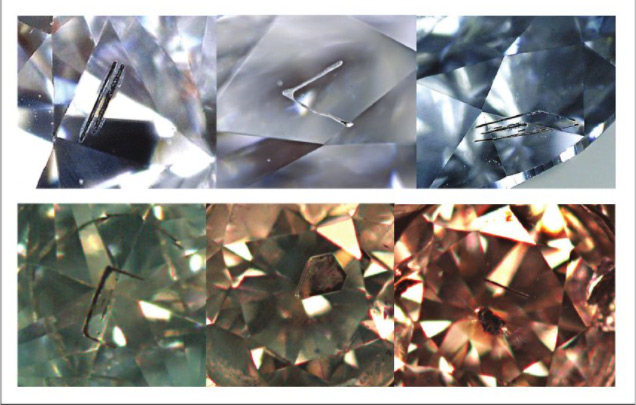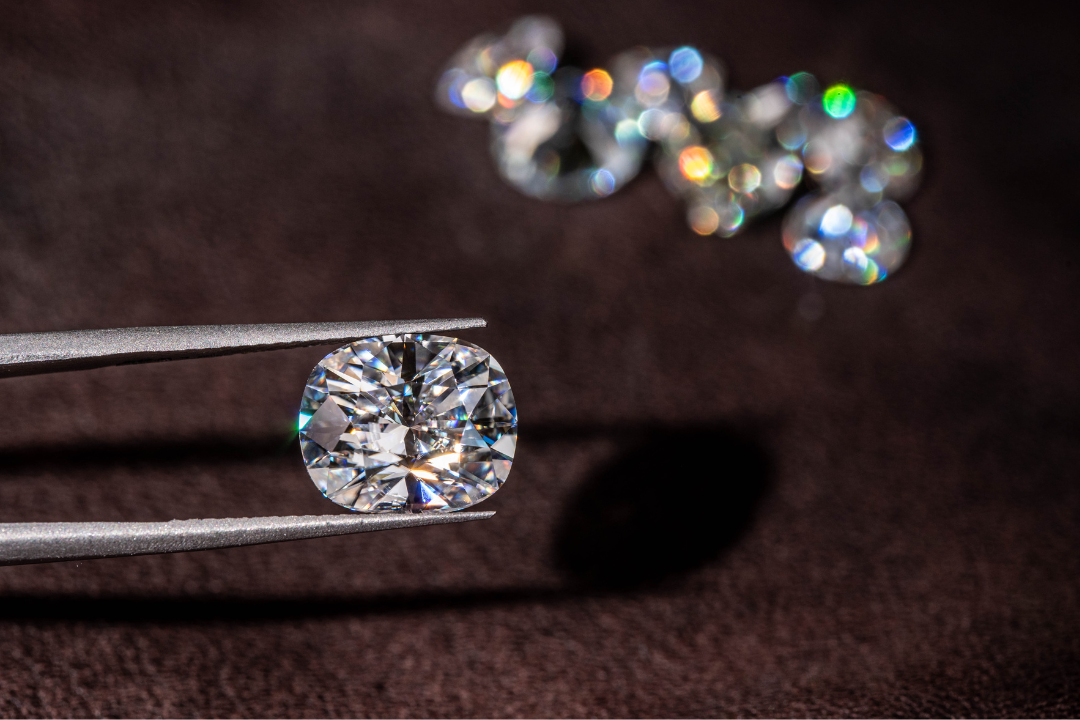Lab-created diamonds have become an increasingly popular choice for those seeking a sustainable, ethical, and cost-effective alternative to natural diamonds. However, just like their natural counterparts, these man-made diamonds can also feature inclusions, which are internal or external imperfections. In this article, we will delve into the concept of inclusions in lab created diamonds, explaining what they are, how they form, and how they differ from inclusions found in natural diamonds. Additionally, we will explore the impact of inclusions on the appearance and value of man-made diamonds.
Table of Contents
What are Inclusions in Lab-Created Diamonds?
Inclusions in lab-created diamonds are imperfections that are typically formed during the diamond creation process. These imperfections can be present inside the diamond as internal inclusions or on the surface as external inclusions. The inclusion types can range from small pinpoint marks to larger, more noticeable flaws, depending on how the diamond was grown. While inclusions may not be completely avoidable, their presence can significantly influence the diamond’s clarity, beauty, and overall value.
In man-made diamonds, inclusions are often a result of the precise conditions under which the diamond is created. The process of creating a diamond in a laboratory involves using high pressure and temperature to mimic the conditions found deep within the Earth. While these lab conditions are designed to replicate nature, slight variations can still lead to the formation of inclusions in lab-created diamonds.
Types of Inclusions Found in Man-Made Diamonds
Just like natural diamonds, inclusions in lab-created diamonds come in various forms, each of which can impact the diamond’s appearance. Some common types of inclusions found in man-made diamonds include air bubbles, crystals, fractures, and metal inclusions. These inclusions can vary in size, shape, and location within the stone, and they can sometimes be difficult to detect with the naked eye.
Air bubbles are one of the most common types of inclusions in lab-created diamonds. These tiny pockets of gas can form during the crystallization process and may be visible under magnification. Crystals, on the other hand, are solid inclusions that form when other minerals are trapped inside the diamond as it grows. These can add to the uniqueness of the diamond but may impact its clarity.
Fractures or internal cracks in man made diamonds are another form of inclusion. They can occur if the diamond experiences sudden changes in temperature or pressure during its formation. Metal inclusions are less common but can appear when traces of metal from the equipment used in the diamond creation process are incorporated into the stone.
How Inclusions Affect the Value of Lab-Created Diamonds
Inclusions in lab-created diamonds can have a significant impact on the diamond’s value. Generally, the clearer the diamond, the more valuable it is, and inclusions can lower the perceived clarity of the diamond. This is why diamonds with fewer and smaller inclusions tend to be more highly prized.
For man-made diamonds, clarity is one of the key factors in determining the stone’s overall value. Diamonds with minimal inclusions or those that are perfectly clear often command higher prices, while diamonds with noticeable inclusions may be more affordable. However, it is important to note that the presence of inclusions in lab-created diamonds is not necessarily a negative aspect. Some buyers may find the imperfections in the stone appealing as they add character and uniqueness to the diamond.
Inclusions also influence the appearance of the diamond. While high-grade man-made diamonds with few inclusions may appear almost flawless, diamonds with more inclusions can have a more muted shine and may not sparkle as brightly. This is why it is important for consumers to carefully consider the extent of the inclusions when choosing a diamond, as it can affect both the aesthetic and the investment value.
The Difference Between Inclusions in Lab-Created and Natural Diamonds
One of the main differences between inclusions in lab-created diamonds and natural diamonds lies in their origin. Inclusions in natural diamonds are formed over millions of years under the Earth’s surface due to geological conditions such as extreme heat and pressure. These inclusions can be caused by trapped minerals, gases, or other factors that occur naturally during the diamond’s formation.
In contrast, inclusions in lab-created diamonds result from the synthetic process used to grow the diamonds in a controlled laboratory environment. While both natural and lab-created diamonds can have similar types of inclusions, man-made diamonds are often more predictable in terms of their clarity and the types of inclusions present. The conditions in the lab can be fine-tuned to minimize imperfections, although some inclusions may still arise during the diamond-growing process.
Furthermore, inclusions in natural diamonds can sometimes be considered a mark of authenticity, with many people valuing the unique story behind the natural formation of the diamond. In lab-created diamonds, inclusions are more of a byproduct of the technological process, and while they may not have the same historical allure, they still contribute to the individuality of each diamond.
How to Choose a Lab-Created Diamond with Minimal Inclusions
When shopping for a lab-created diamond, it is essential to consider the clarity grade, which takes into account the size, number, and location of inclusions. Diamonds are typically graded on a scale from Flawless (FL) to Included (I1, I2, I3), with Flawless diamonds being free of any visible inclusions under 10x magnification.
To select a man-made diamond with minimal inclusions, shoppers should aim for diamonds with a clarity grade of VS1 (Very Slightly Included 1) or better. These diamonds will have fewer inclusions that are not easily visible to the naked eye. However, diamonds with lower clarity grades, such as SI1 (Slightly Included 1), may offer a more affordable price while still providing a beautiful appearance.
It is also important to remember that the presence of inclusions does not necessarily make a lab-created diamond less valuable in terms of aesthetic beauty. Some buyers may prefer diamonds with slight inclusions as they tend to have a more unique character. Additionally, choosing a man-made diamond with inclusions that are strategically placed in less noticeable areas can help ensure that the stone maintains its sparkle and beauty.
Conclusion
Inclusions in lab-created diamonds, just like those found in natural diamonds, are a common occurrence that can influence both the beauty and value of the stone. While inclusions can lower the clarity grade and impact the appearance of the diamond, they also add to the uniqueness of each piece. When choosing a man-made diamond, understanding the types of inclusions and their effect on the stone’s appearance and value is essential. With careful selection and consideration, buyers can find the perfect lab-created diamond that meets their preferences and budget, making the process of choosing a diamond an enjoyable and rewarding experience.




